24 Hours Hotline: +86 137-3541-1378
Email:[email protected]
24 Hours Hotline: +86 137-3541-1378
Email:[email protected]

Introduction to Chengdu
Chengdu,
the capital city of Sichuan province, is an important center city and
sub-provincial-level city of China. As a Historic and Cultural City of
China, Chengdu is also, defined by the State Council, Southwest China's
center of science, commerce, and finance and hub of telecommunication
and transportation. Governing 9 districts, 4 county-level cities and 6
counties, Chengdu covers an area of 12,100km2, and has a population of
14.07 million, including an 11.63 million registered population and a
7.68 million urban population.
Situated in the plain of west Sichuan, Chengdu gains its name after the old saying," It took one year to make Chengdu a village, two years a town, and three years a city", and it has been 2300 years since the founding of Chengdu city. Rich in natural resources, Chengdu stays immune from cold winter, hot summer,hunger, flood and drought, therefore is honored as" the Land of Abundance." Home to plenty of world natural and cultural heritages such as Qingcheng Mountain, Dujiangyan Irrigation System, Panda base, and national 4A and above scenic spots such as Wuhou Temple, Dufu Thatched Cottage, Jinsha Relics, Xiling Snow Mountain, Chengdu also enjoys abundant tourism resources and is rated by WTO as Best Tourism Attraction in China.

History of Chengdu
Listed
by the Chinese State Council as one of China's 24 most important cities
in terms of historical and cultural significance, Chengdu's history
dates back to over 2,300 years.
As
early as 4th century BC, the Shu State moved its capital to where
Chengdu city is presently located, and in the year 311 BC, the Qin
people built a city wall of 12 li (6 km) in circumference and seven
zhang (about 25m) high, which marked the formal establishment of Chengdu
city. In 1985, an ancient building complex was unearthed by the west
city gate of Chengdu, which was identified as a palace of the Shang
Dynasty, built more than 3,600 years ago. This discovery pushes
Chengdu's recorded history back over 1,000 years.
During
the Western Han Dynasty (206-25 BC) the city was known as Brocade
Cityfor its then-thriving silk brocade industry. During the Wudai
Dynasty (907-960), the top of the city wall was extensively planted with
hibiscus flowers, and at the time, the city was frequently referred to
as Hibiscus City, a name by which it is stilled called today.
In
the Qin (221-206 BC) and Han (206 BC-220 AD) Dynasties, Chengdu was a
well-known hub of commerce. By the Tang (618-907 AD) and Song (960-1279
AD) dynasties, the traditional business workshops were gradually
replaced by a pattern of selling shops facing the street and
manufacturing shops attached behind (qiandian houfang). The whole city
consisted of five big commercial centers plus a large out-of-town hay
market. Throughout the year, a theme fair would be held each month:
January for lantern; February for flower; March for silkworm; April for
brocade; May for fan; June for incense; July for seven treasures; April
for fragrants; September for medicine; October for wine; November for
plum and December for peach wooden charms. The city also saw brisk night
fairs at the time. Today, people can still hear such names as Business
Street and Button Fair Street, a reflection of the city's historical
commerce.
China is the world's
first country to use paper money, and Chengdu is the forerunner in
China. Paper money was issued in Chengdu in the early North Song Dynasty
(420-479), which greatly pushed the development of trade and economy.
Chengdu is also the first place in the world to extract and use natural
gas. That was in the Western Han Dynasty when Chengdu people utilized it
to produce salt.
Chengdu attractions
Dujiangyan Irrigation Project
Dujiangyan
is actually a small satellite town 45 minutes northwest of Chengdu by
car. A high-speed rail link from the North Rail Station cuts that trip
down to 15 minutes. The irrigation project here is definitely worth the
trip. Constructed more than 2,000 years ago by a Daoist bureaucrat, the
dam is still functioning today and provides Chengdu with a stable water
supply year round. The park around the dam is beautiful and a nearby
temple, the Er Wang Temple, was rebuilt after the 2008 Wenchuan
Earthquake and also well worth a visit.
Address: Dujiangyan City
Opening Time: 8am to 5:30pm
Jinli Ancient Street
Jinli
Ancient Street is as popular with locals as it is with tourists.
Modelled after a dynastic-era street in ancient China, Jinli boasts
great gardens and architecture, housing dozens of souvenir shops and
small curio stands. The real treat, however, is all of the food. At
night the food stalls come out, and hungry locals replace worn out
tourists. A large park opens up at the backend of Jinli, and there are
nightly Sichuan Opera performances as well. The best time to visit Jinli
is at dusk, when the lamps come out. Don’t forget to bring your camera.
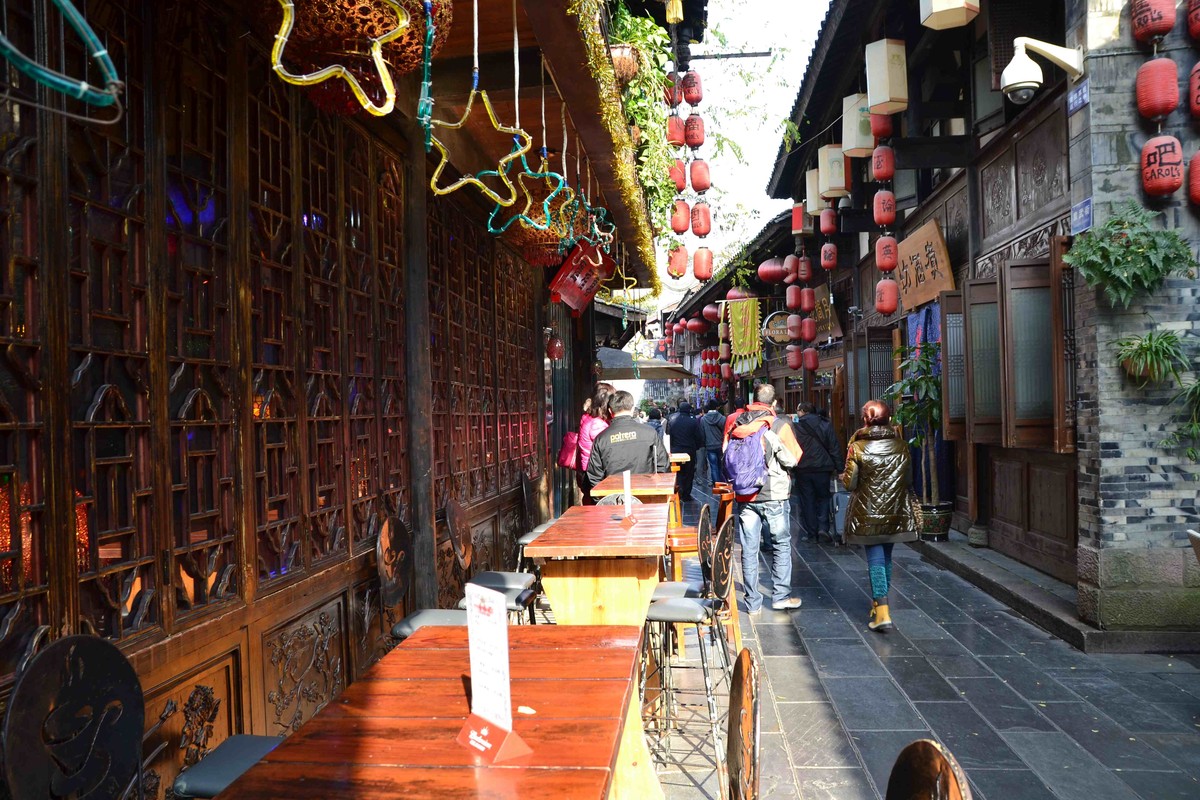
Address: Wuhou Ci Street
Opening Time: open 7 days a week from morning until late at night
People' s Park
People’s
Park is a great afternoon getaway. There are several teahouses on the
grounds, including one of the more famous in the city, the Hemin
Teahouse. You can row on a lake, dance, watch people dance, play chess
or work out at People’s Park. Semi-professional ear-cleaners will pursue
you with long metal tongs, urging you to clean out your earwax for a
few pence. There is also a large monument here commemorating an uprising
that helped lead to the fall of the Qing Dynasty.
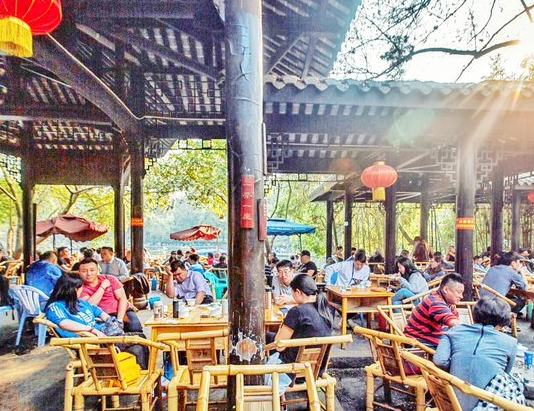
Address: Qingyang District, Citang Street
Opening Time: 6am to 6pm
Tianfu Square
Tianfu
Square, where the nation's largest Mao Zedong statue overlooks Chengdu,
is located at the very center of the city. The square lights up at
night, with fountains providing a small show to revolutionary music. It
is often crowded with migrant workers, and people from outside of
Chengdu who take their significant others to the square for a quiet,
free night out. A large contemporary art museum is under construction
beside the square, and should be completed by mid-2015.
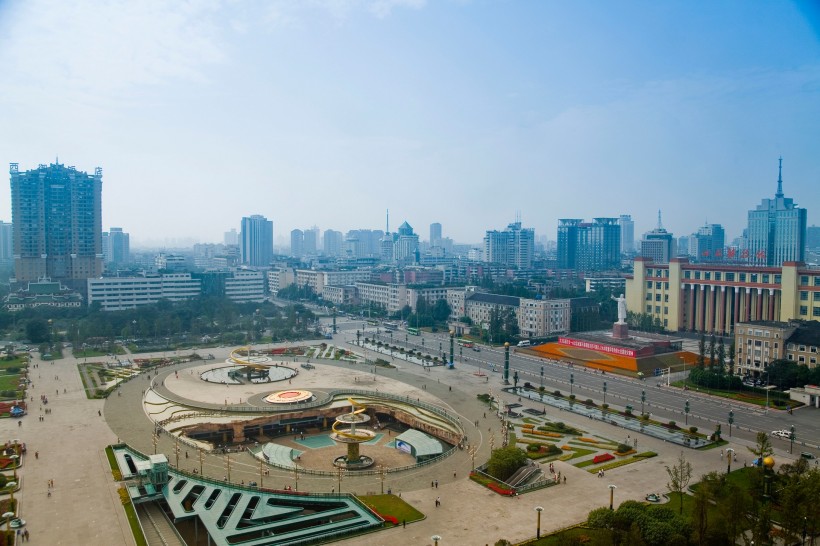
Address: Tianfu Square (city center, where Metro Lines 1 and 2 converge)
Wide and Narrow Lanes
Known
as Kuan and Zhai Xiangzi in Chinese, these two lanes are the last of
Chengdu's old town. The area was renovated from 2009 to 2011, and now
resembles similar "imperial style" tourist areas in other major Chinese
towns. Despite the cookie cutter approach, the architecture and lay-out
are still very attractive. There are little curiosities all throughout
the two lanes, such as Qing-era stone arches and lions at the doorways,
tiny alcoves of old black brick, and poems inscribed on doorways and
walls. The lanes are lined with high-end restaurants and tea houses,
including a Starbucks. At night the food stalls come out, serving
popular Chengdu snacks like San Da Pao (doughballs rolled in brown
sugar), and Dan Dan Mian (noodles in a spicy meat sauce).
Address: Kuan and Zhai Xiangzi
Opening Time: 9am to 2am
Chengdu Cuisine
Sichuan
Cuisine, which is primarily based on Chengdu and Chongqing dishes,
focuses on the refined selection of raw materials, the dimensions, the
harmonious layout and the sharp contrasting taste and colours. Sichuan
dishes are spicy, hot, savoury, fresh, greasy and strong. Peppers,
prickly ash peels, peppertrees, along with ginger are frequently used.
There are a considerable number of refined dishes, ranging from household dishes, traditional folk snacks and popular fast foods, to the senior feast consisting of three steamed dishes and nine braised dishes (San Zheng Jiu Kou, ????; a feast popular in the rural areas of Sichuan) with various creative patterns.
Kung Pao chicken
Kung
Pao Chicken (????) in Chinese is a stir-fried dish with chicken cubes,
dried chili pepper and deep-fried peanuts. The tender taste of the
chicken matches great with the crispy peanuts with a combined sweet,
sour and spicy taste.
Braised Spicy Tofu (Mapo Doufu, ????)
This
is an incredibly mouth-watering Chinese dish. Blanched tofu is simmered
in a spicy sauce with garlic shoots, then sprinkled with ground Sichuan
peppercorns.
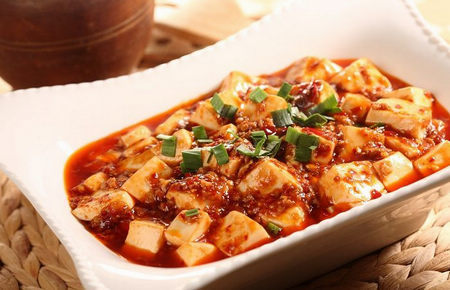
Szechuan Chicken in Chili Sauce (Koushui ji ???)
The
short poaching cooking skill will make the chicken meat super tender
and it is also used in Cantonese white cut chicken. After cooking, soak
the chicken in iced water can tighten the skin. There are several
important tips to make perfect chicken at home with tender texture and
excellent Szechuan style mala flavor.
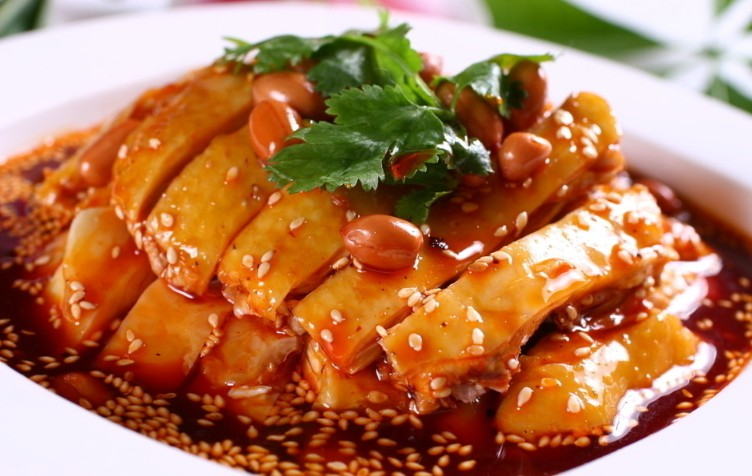
Giant Panda
The
giant pandas are only found in Sichuan, Shanxi and Gansu provinces. In
total there are fewer than 1000, of which 80% are distributed within the
territory of Sichuan province. They are not only a Chinese national
treasure but are also beloved by people worldwide. In that case, many
visitors from domestic and abroad come to Chengdu, and their most main
objectives will be to see the giant pandas for themselves.
The
Chengdu Panda Breeding Research Center is located only 10 KM from the
downtown of Chengdu city, itimitates the pandas' actual habitat in order
that they might have a the best possible environment for rearing and
breeding.
The Center cares also
for other rare and endangered wild animals. Giant pandas, lesser pandas,
black-necked cranes, white storks as well as over 20 species of rare
animals are fed and bred there throughout the year. Verdant bamboo,
bright flowers, fresh air, a natural hill scene and a beautiful
artificial view are merged ingeniously at the base. The Giant Panda
Museum was opened in 1993. This is the world's only thematic museum for
rare and endangered animal species. The three main exhibitions are in
the Giant Panda Hall, the Butterfly Hall and the Vertebrate Hall. The
excellent exhibitions provide a wonderful venue for all who are
interested in seeing something of the propagation and protection of the
region natural bio-diversity.
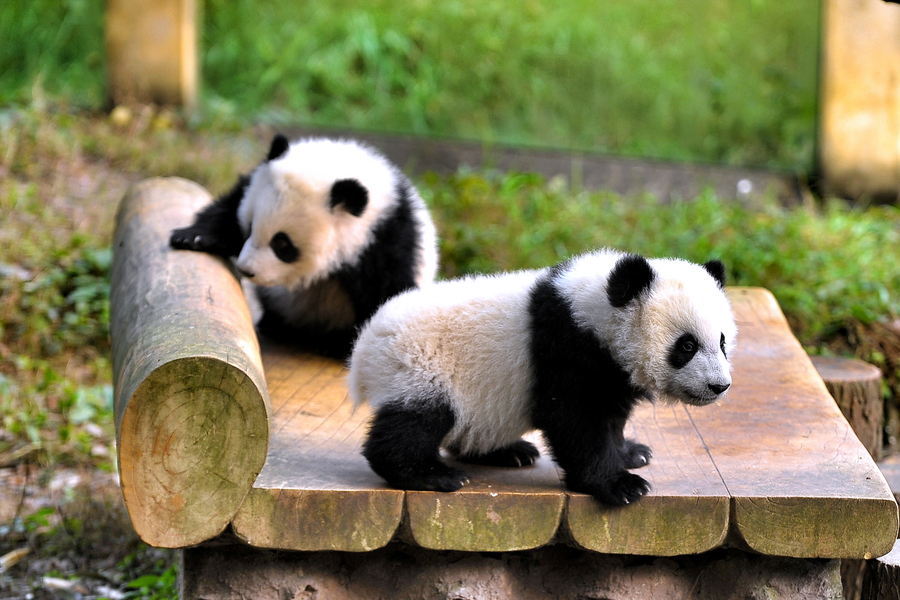
Topography
Chengdu’s
topography takes the shape of a ladder, which slopes toward the
southeast from the northwest. The highest point, with an elevation of
5,364 m, is the Miao Ji Ling Range located in Xi Ling Town under Da Yi
County. The lowest site, 387 m above sea level, is the outlet of the Zhi
Shui River below the Jin Tang-Jian Yang Bridge in Yun He Town under Jin
Tang County. The city’s relative height difference is about 4, 977 m.
The prominent difference of its elevation height results in the vertical
climate of heat difference and colorful natural landscape. Under these
conditions, local living resources in Chengdu area have various families
and complete categories, creating excellent advantages to develop
tourism and three-dimensional agriculture.
Population
Chengdu
is one of the most densely populated cities in China. The total
household registered population is 12,280,485 in 2015. Chengdu is the
fourth-largest city in China, whose population density is 1006 persons
per sq.km, and that of city area and central city area are 2131 persons
per sq.km and 7933 persons per sq.km respectively.
Religious belief
Buddhism,
Daoism, Islamism, Catholicism and Christianity are in existence in
Chengdu. During the reign of Emperor Shun Di of the Eastern Han Dynasty,
Heavenly Master Zhang Ling founded “Five-Piculs-of-Rice Sect” on the
Mount He Ming of Da Yi County. This indicated the beginning of Chinese
Daoism. Buddhism also entered Chengdu quite early for it came to this
area towards the end of the Eastern Han Dynasty. More than 600 years
ago, Islamism entered Chengdu in the Ming Dynasty. Catholicism and
Christianity entered Chengdu respectively in 1640 in the Ming Dynasty
and in 1881 in the Qin Dynasty. At present, there are 178 religious
activity sites, and 1,509 priests and working staff in Chengdu.
Wechat: Chinaprivatetour
24 Hours Hotline:
+86 137-3541-1378
* Authentic Experiences: Genuine local experiences that immerse you in the true essence of Hangzhou and beyond.
* Safety First: Highest safety standards with secure activities and reliable transportation.
* Customizable Tours: Flexible itineraries tailored to your interests and needs.
* Local Expertise: In-depth knowledge of Hangzhou and China, offering exclusive insights.
* Professional Guides: Licensed bilingual guides with over 5 years of experience.
* Comfortable Travel: Experienced drivers and well-maintained vehicles for a smooth journey.
* Sustainable Tourism: Commitment to responsible tourism and supporting local communities.
* Customer-Focused: Personalized service and continuous improvement based on your feedback.
* Free Cancellation: Cancel up to 24 hours before travel for flexibility and peace of mind.
* 24/7 Support: Round-the-clock assistance for any questions or help needed.
1 to 1 tailor-made service from our professional travel advisors for the most sophisticated
Constantly excellent reviews for attraction, hotel and service Competitive price
Local experts provide quality tours Best selected knowledgeable local guides Authentic local restaurants
7*24 hours available to create you a worry-free tour. No Hidden Fees and absolutely no pressure to buy. Secured








Copyright © 2017 Hangzhouprivatetour.com All rights reserved.